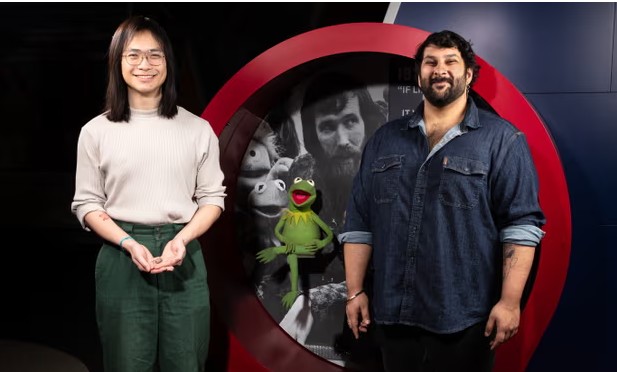One of the earliest known frogs is believed to be Kermitops gratus, which is a crucial stage in the transfer of life from water to land.

In addition to being honoured with a star on Hollywood’s Walk of Fame and becoming a global celebrity due to many successful motion pictures and television series, Kermit the Frog is named after a 270 million-year-old fossil.
Because of its likeness to the brilliant green star of The Muppet Show, scientists have called the species of ancient amphibian progenitor they have unearthed Kermitops gratus.
The ancient organisms are believed to be among the first real amphibians and mark a significant evolutionary turning point in the development of life from water to land.
The specimen was found in the Smithsonian National Museum of Natural History’s fossil collection forty years ago in the Red Beds region of Texas, US, but it was never studied.

“Using the name Kermit has significant implications for how we can bridge the science that is done by palaeontologists in museums to the general public,” said Calvin So, a doctorate student at George Washington University in Washington, DC.
“It was the ideal name for it since this animal is a distant descendant of today’s frogs and Kermit is a modern-day amphibian icon.”
The fossil was subsequently acquired by the museum’s palaeontologist, Dr. Arjan Mann, in 2021, who described it as a “very well preserved, mostly prepared skull.”
The inch-long fossilised skull, which had huge, oval-shaped eye sockets, was examined by scientists.
The fossil was recognised as a temnospondyl by Mann and his trainee So. Tenmospondyles are a varied group of extinct amphibian cousins that existed between 360 and 200 million years ago.
The characteristics found in the skulls of earlier tetrapods—the four progenitors of amphibians and other living vertebrates—were distinct from what the researchers called a “mishmash of traits,” according to their analysis of the skull.
They said that the Kermitops’s lengthy, curled snout was far longer than the area of its skull behind its eyes.
They claimed that Kermitops’s cranium, which most likely resembled a robust salamander, would have made it easier for him to capture microscopic insects that looked like grubs.
It is challenging to comprehend the origins of frogs, salamanders, and their relatives due to the paucity of early fossil records pertaining to amphibians and their progenitors.
The researchers said that while a fossil like Kermit’s ex-wife Miss Piggy has not yet been found, Kermitops provided hints to fill in this “huge fossil gap.”
Many more palaeontologists should reinvest in this vibrant field of study, according to Mann. Palaeontology is always about more than simply dinosaurs; many fascinating evolutionary tales and riddles remain to be solved.
The most well-known puppet designed by Jim Henson, Kermit debuted in 1955.
He hosted The Muppet Show and made appearances in a number of Sesame Street routines.
A gifted vocalist, the adaptable amphibian has achieved success with hits like “Rainbow Connection” and “Bein’ Green.”


